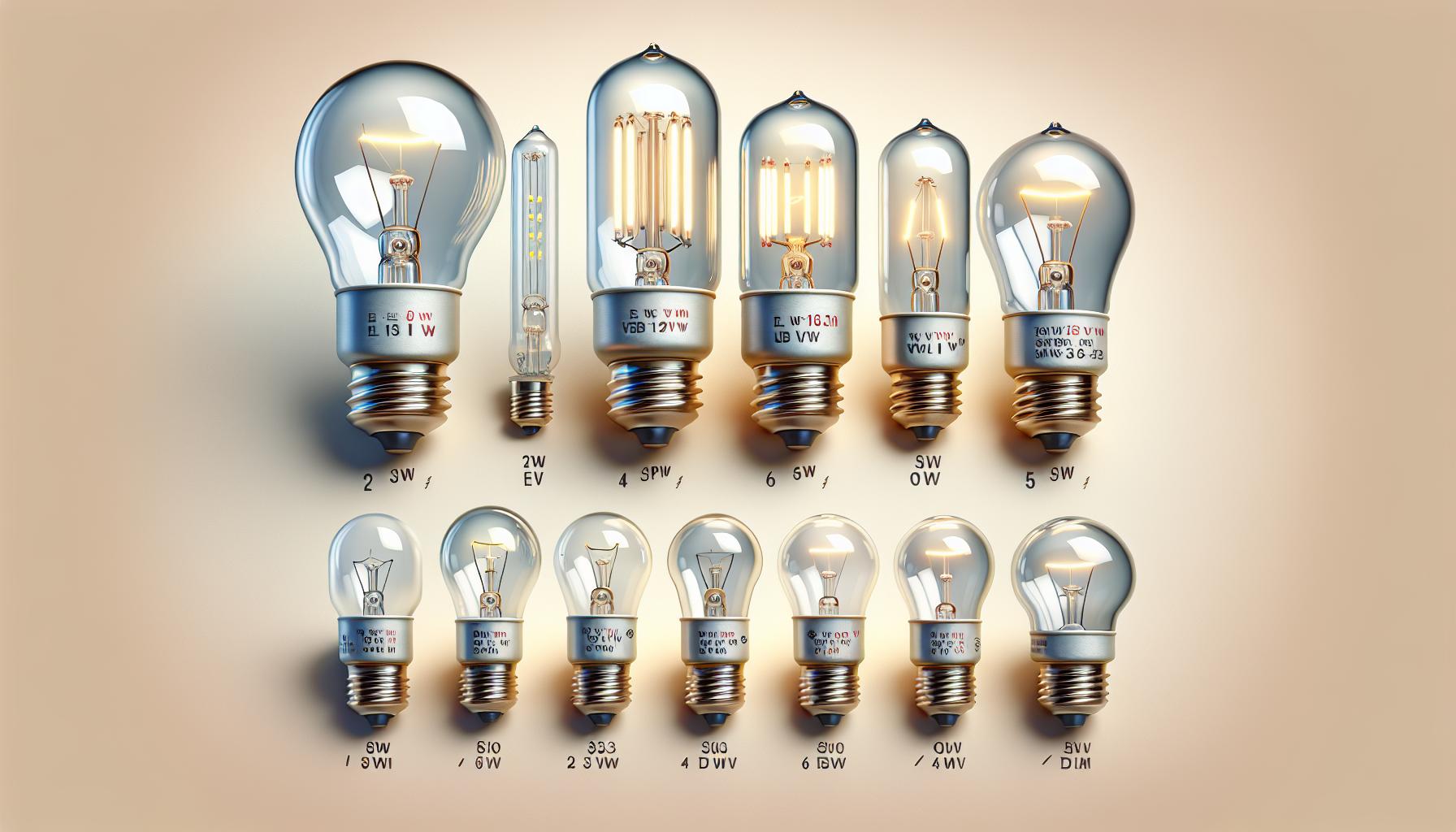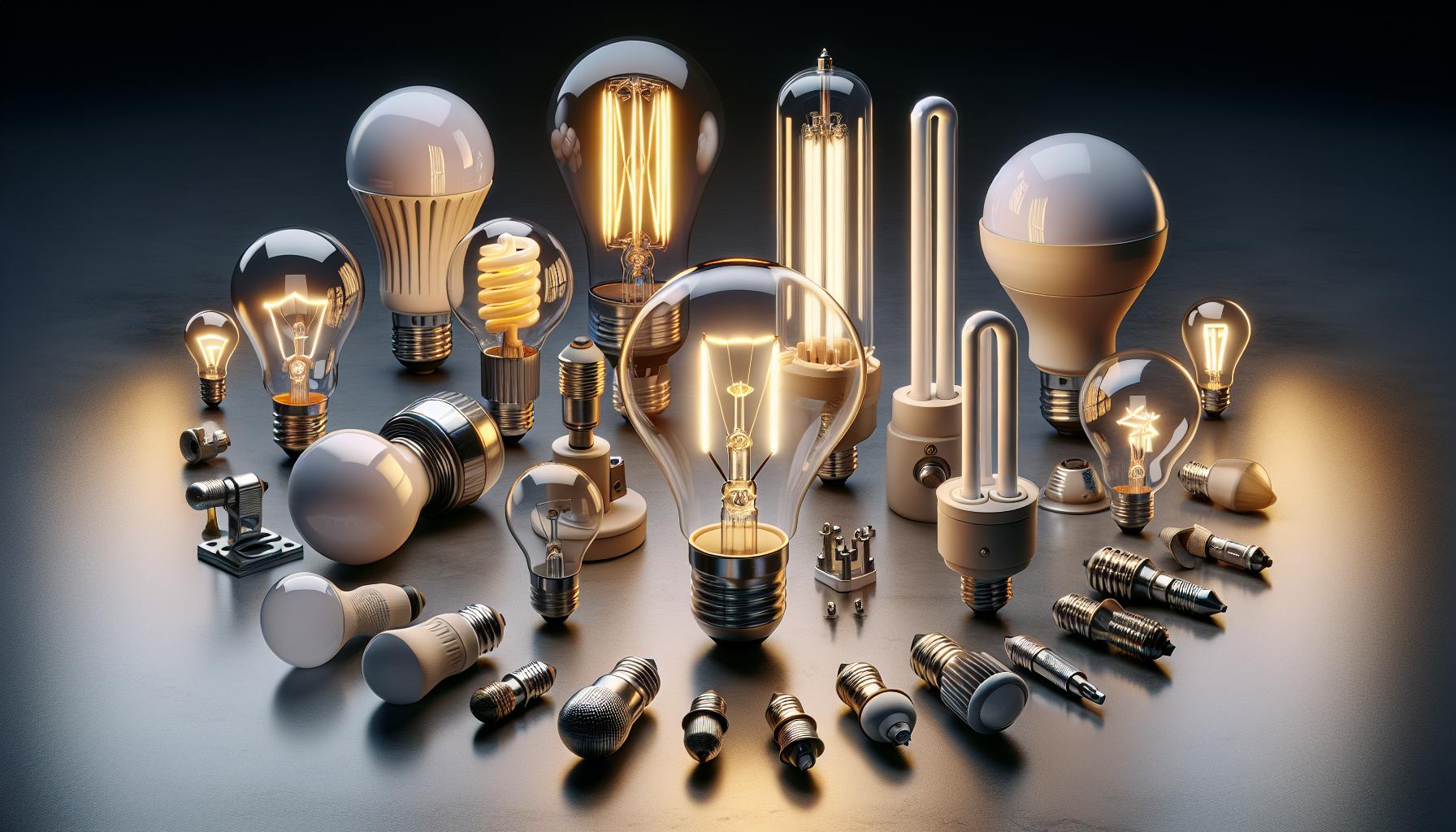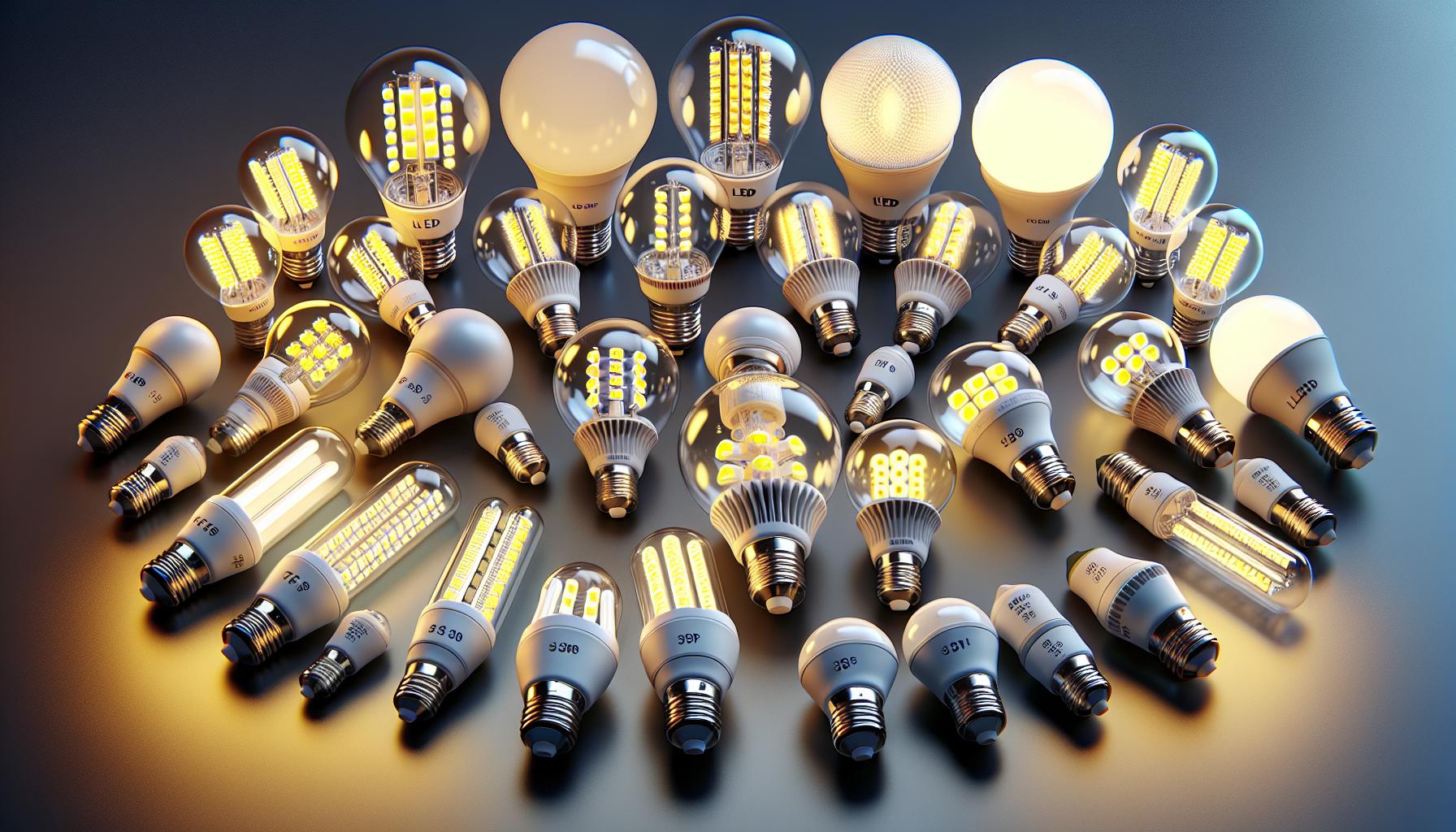Ever found yourself staring at the endless options in the light bulb aisle, wondering if there’s a one-size-fits-all solution? You’re not alone. The question of whether light bulbs are universal is one that’s flickered in the minds of many.
You might think a bulb is a bulb, but the truth is, there’s a whole world of shapes, sizes, and types that could brighten or dim your day. Let’s shed some light on this illuminating topic and find out just how universal light bulbs really are.
Types of Light Bulbs
Diving into the world of light bulbs, you’ll quickly discover the wide array of types available to you. Your home’s ambiance and functionality can be radically transformed simply by the light bulbs you choose, so it’s vital to understand the differences.
First off, there’s the incandescent bulb, the traditional type you might think of with a warm, inviting glow. They’re prized for their color rendition, but they’re not the most energy-efficient option available.
Then there’s the compact fluorescent lamp (CFL), which took the market by storm with its energy-saving qualities. CFLs give off a cooler light and take a moment to warm up to full brightness, yet they use about 70% less energy than their incandescent counterparts.
Light Emitting Diodes (LEDs) are the front-runners when it comes to energy efficiency and lifespan. By using LEDs, you can save substantial amounts on your energy bills and won’t have to change bulbs as frequently—a win-win for any DIY enthusiast.
Don’t forget about halogen bulbs, which are similar to incandescents but slightly more energy-efficient and with a brighter, whiter light. Perfect for those task areas in your home where detail is key.
Let’s also talk about smart bulbs. These are the tech-savvy choice, often LED-based, that you can control from your smartphone. They can adjust color temperatures, dim to your liking, and even set schedules—a delight for any modern home.
For those with an eye for design, specialty bulbs with different shapes, filament styles, or unique colors can add that special touch to your décor, though they may not always be the most practical in every setting.
Consider the following aspects when choosing the ideal bulb for your space:
- Energy efficiency
- Brightness and color temperature
- Lifespan
- Dimmability
- Smart technology compatibility
Remember, while it’s tempting to focus on aesthetics, never underestimate the importance of functionality when it comes to lighting up your home. With the right information and a bit of creativity, you’ll illuminate your living spaces effectively and beautifully. Keep in mind the importance of compatibility with existing fixtures to ensure a hassle-free installation for your next DIY lighting project.
Understanding Light Bulb Bases and Sizes
When you’re in the middle of a lighting project, the last thing you want is a light bulb that doesn’t fit. It’s not just about the type of bulb; the base and size are critical for ensuring compatibility with your fixture.
Light bulb bases anchor the bulb to the fixture and provide electrical connectivity. There are several types of bases you might encounter:
- Screw Bases: Known as Edison screws, ranging from E12 (candelabra) to E26 (standard US base) and E39 (mogul).
- Pin Bases: Commonly used in CFLs and fluorescents, with two or more pins that plug into the fixture.
- Bayonet Bases: A push-and-twist type, more common in the UK.
« Can You Use Indoor Light Bulbs Outside? Safety Risks Exposed
Can Light Bulbs Be Stored in Garage? Ultimate Guide to Safeguarding Your Bulbs »
Here’s a handy tip: the number alongside the ‘E’ or other base designation typically represents the diameter of the base in millimeters. So, an E26 has a diameter of 26 mm.
But don’t forget about bulb size. You’ve likely heard terms like A19 or PAR38, which can sound cryptic. The letter indicates the shape of the bulb while the number tells you the diameter at the bulb’s widest point, divided by eight. So, an A19 bulb is an A-shaped bulb that’s 19 eighths of an inch in diameter.
Understanding bulb shapes is crucial too. Bulbs come in various shapes for different applications:
- A-Shapes: The classic bulb shape, perfect for standard lamps and lighting fixtures.
- Candle: Imitates the shape of a candle flame, ideal for chandeliers and decorative lamps.
- Reflector: Typically used in spotlights and track lighting, focusing the light in a specific direction.
- Globe: Provides a wide-spread light, often used in bathroom vanity lighting or pendant lights.
Knowing the right base and size for your light fixture can save you a lot of frustration. Always check the specifications of your existing fixture before buying new bulbs—you’ll thank yourself later when your lighting project shines without a hitch.
The Importance of Voltage and Wattage
When diving into the world of lighting, you quickly learn that the terms “voltage” and “wattage” are more than just jargon; they’re crucial to bulb performance and safety. Let’s shed some light on why these factors are key in your quest to find the perfect bulb for your home.
Voltage refers to the electrical potential of your power source, and it’s imperative to match the bulb with your home’s voltage. In the US, most homes have a standard voltage of 120 volts for your typical sockets. However, if you’ve ever inadvertently placed a 220-volt bulb in a 120-volt socket, you know it resulted in a dimly lit and short-lived bulb. Similarly, a 120-volt bulb in a 220-volt socket often ends your bulb’s life with a dramatic pop!
On the flip side, wattage indicates how much energy a bulb uses. While you might be tempted to pick the highest wattage for the brightest light, it’s not always the best move. Overloading a fixture with a high-wattage bulb can lead to overheating, which poses a fire risk and can damage both your fixture and bulb. Always check the max wattage rating on your fixture and stick to it.
When you’re scouring through options, you’ll notice LED bulbs have significantly lower wattages for the same light output as incandescent bulbs. This is due to their higher efficiency, but don’t let the lower wattage fool you—they can provide the same level of brightness, while using less power and producing less heat.
Remember, compatibility extends to voltage and wattage too. Your light fixture and bulb must speak the same language to work effectively and safely. As you keep these factors in mind, you’ll ensure that your home stays brightly lit and hazard-free.
Compatibility Issues with Light Fixtures
When you’re knee-deep in a home DIY project, the last thing you want is to hit a snag with something as small yet crucial as a light bulb. Compatibility is the linchpin of efficient lighting, and overlooking this can lead to unexpected issues. Let’s shed some light on common compatibility pitfalls you might face.
First off, consider the fixture design and age. Vintage fixtures may have peculiar requirements not just in terms of bulb size, but also for the kind of technology they can support. Plugging a modern LED bulb into an antique lamp without a proper adapter, if at all possible, can be a risky move. The fixture’s inner wiring might not handle the lower wattage of an LED, leading to malfunction or even damage.
Fixture compatibility is often taken for granted. For example, if you’ve got recessed lighting, the heat dissipation design is tailored for specific bulb types. Straying from these can cause excessive heat buildup. Always match your bulbs with the fixture’s specifications to maintain a safe environment.
How about fixtures with dimming capabilities? They need bulbs compatible with the dimmer switch installed. Not all LEDs dim the same—if at all—so you’ll need to check if your chosen bulb can handle the gradual decrease in power without flickering or failing entirely.
Keep an Eye on Color Temperature
While not a direct compatibility issue, the color temperature of a bulb plays a role in the overall ambiance. Mismatched color temperatures can disrupt the room’s mood, and some fixtures are designed to enhance certain hues. So it’s worth noting whether a fixture has a color temperature recommendation.
In essence, checking compatibility is more than just preventing a bulb from physically fitting in a fixture. You’re looking to preserve the fixture’s integrity and the safety of your home while achieving the desired lighting effect. Always check the manual or manufacturer’s guidelines before making a decision—you’ll thank yourself in the long run.
Are LED Light Bulbs Universal?
You’ve likely seen LED bulbs marketed as a universal solution for your lighting needs, touting energy efficiency and long life spans. However, it’s not as simple as a one-size-fits-all when it comes to LED bulbs. Compatibility is a key factor here just as with any other type of light bulb.
First, let’s talk about base types. Most LED bulbs are designed to fit standard fixtures with common base sizes like E26 or E27 for your typical screw-in bulbs, and GU10 or MR16 for your pin-type spotlights. However, with the vast array of fixtures out there, you’ll find some with unique or proprietary bases. In these cases, you might need special adapters or even specific LED bulbs made for those exact sizes.
Beyond the physical fit, you’ll also need to look at the electrical requirements. Vintage fixtures, for instance, may not have been designed with the low wattage of an LED in mind. Conversely, some modern fixtures are only compatible with LEDs and won’t function correctly with incandescent bulbs.
Consider your dimmer switches. Not every LED is dimmable, and even among those that are, not all will work with every type of dimmer switch. It’s essential to check whether your existing dimmer is compatible with the LED bulbs you’re considering. If you’re fond of cozy, ambient lighting, you might end up disappointed if you don’t check for dimmer compatibility.
Another consideration is color temperature. LEDs come in a wide range, from warm whites reminiscent of the glow from an incandescent bulb to the cool whites or daylights that mimic natural sunlight. Depending on the mood or function of a room, you’ll want to carefully choose the color temperature that’s best for your space.
So, are LED light bulbs universal? They’re versatile and efficient, but it’s critical to check for compatibility to avoid the frustration of a misfit or malfunction. Always double-check the specifications and ensure you’ve got the right bulb for the right fixture. That way, you’ll enjoy the full benefits of LED lighting without any hiccups.
Conclusion
So you’ve seen that while LED light bulbs offer a world of convenience and efficiency they’re not a one-size-fits-all solution. Remember to double-check the base size and electrical requirements of your fixtures before making a switch. Paying attention to these details ensures you’ll enjoy the full spectrum of benefits that LED lighting has to offer from the right color temperature to seamless dimming capabilities. Happy lighting!
Frequently Asked Questions
What is the main compatibility concern when using LED light bulbs?
LED bulbs are designed to fit standard fixtures, but special adapters or specific LED bulbs may be needed for unique or proprietary bases, highlighting the importance of checking the fixture base size before purchasing.
Can I use LED bulbs in vintage fixtures?
Some vintage fixtures may not be compatible with the low wattage of LED bulbs. It’s vital to understand the electrical requirements of the fixture before using an LED bulb to avoid potential issues.
Do LED bulbs work with all dimmer switches?
Not all dimmer switches are compatible with LED bulbs. It’s important to check if the existing dimmer switch supports LED technology to ensure proper dimming functionality.
Why is it important to consider the color temperature of LED bulbs?
Choosing the right color temperature is crucial for achieving the desired lighting effect, as different temperatures can affect the mood and ambiance of a space. LED bulbs come in various color temperatures, so selecting the appropriate one is key.





